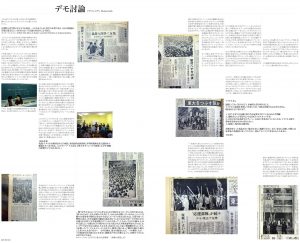For Carl
(2010)
I was looking at the back of the head of an artist. I felt as if I was gazing at an ageless statue. From my perspective I saw barely any movement, as he tapped away at his laptop silently. He had forgotten to turn on music. This was how he sat most of the time when working on his art; knowing this to be the position of his success, his round head compact and processing privately, an agitated suspicion grew in me that this must be a ruse. Where does it happen? How does he change his own life this way, sitting in this chair, in this same room day after day? Or else eating. Drinking. Watching DVDs. Reading. Discussing, smoking. Suddenly I had the visceral, primitive urge to behold a slob in an expressionistic pigsty, rubbing things around imperfectly. Everything strange and psychological. The ideal, disgusting studio leaves its fermented blossoms splayed open like a lurid compost heap. Makeshift and unfinished, this studio I desired to be in (and in which I was not standing) reveals its processes, complete in each phase, in its unresolvedness. Uncertainty is beautiful, I almost blurted out into the room, coughing into my fist instead. The sound bounced off nearly bare walls, reverberating eagerly in the space as if auditioning for another, similar space. As if the space multiplied itself aurally in order to underscore just what it was.
He turned around, a calm composure on his face, quite healthy, although clearly with a mind still one-hundred-eighty degrees in the opposite direction. He welcomed me to his studio. I looked around as though seeing it for the first time. I wrote the word “notes” at the top of a notebook page. We turned attention to his work on the screen; he sat back in the chair and let me scroll. I was also permitted to read the captions. There were several books with documentation in a neat pile next to the computer. We talked at length about the projects: the research he had conducted while on residency in Berlin, on Hitler’s favourite window display designer; some site specific works, and some plans and unrealized pieces that were ready for a venue; his famous series of projects that only exist when you are looking at his portfolio. His work was geometric, monochrome, oscillating between inner and outer space. There was a strange electrical-type feedback between us: I found myself settling into a but but but pattern, a slew of insinuations. My dyspepsia made me visibly discomforted; he noticed and began to worry and speak at greater speeds, cutting the words from the ends of sentences, took the mouse from me, and searched for an important folder. All this made me more perturbed, which he noticed, and it all recycled on and on some frightening minutes.
Finally we unlocked from the laptop; he gave me some herb tea and I began to calm down. I took a break from the white desk and looked out the window, which in fact displayed quite a nice view. Autumn. I turned around. I need a Flemish artist in the show because of a deal I had made with a Belgian cultural foundation – for some reason I found myself saying this out loud. I blinked my eyes as if time had stopped. I noticed the artist wasn’t bemused; he was actually smiling, head cocked. I found I had to speak my mind, whatever it was; something had come loose. There was a warm sensation in my belly. I told him what I thought about his pretentious glasses, and the ridiculous, suave glass ashtray on the desk. And I told him I loved his cologne, and that I thought myself to be a lousy dresser, but there was just not enough time in the day. I took down some more tea. I asked him straight up if his parents were rich and whether he was afraid of anonymity, and I told him how awful I thought his interview was that I had read in his most recent catalogue. Was it edited by a parrot, I asked. I couldn’t help myself, and the warm feeling just grew and felt great and sensual. The studio was no longer empty. I have never felt like this before, I remarked, which provoked a smirk.
